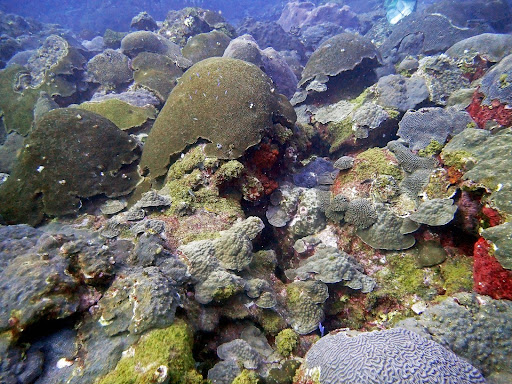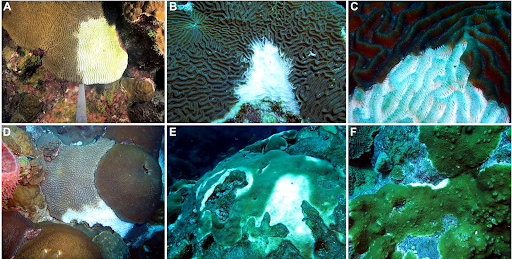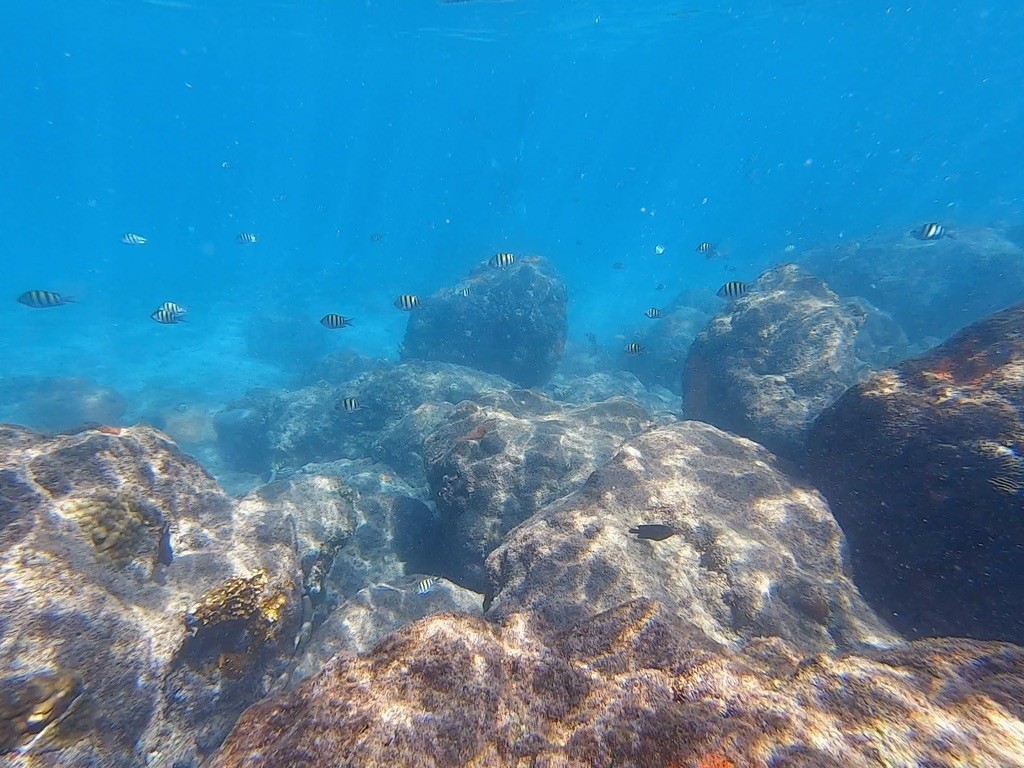When white lesions began appearing at the famously intact Flower Garden Banks coral reef system, scientists knew a rapid, multi-agency, collaborative response was vital to learn from this coral disease outbreak. Scientists from NOAA’s Atlantic Oceanographic and Meteorological Laboratory (AOML) and University of Miami’s Cooperative Institute of Marine and Atmospheric Studies (CIMAS) recently co-authored a publication about rapid tissue loss on the three dominant coral species at Flower Garden Banks National Marine Sanctuary, observed during National Coral Reef Monitoring Program cruises in the fall of 2022.

Flower Garden Banks National Marine Sanctuary, located in the northwest Gulf of America, is a thriving, geographically-isolated coral reef system with the highest coral cover in the continental United States. Despite the global epidemic of coral bleaching and disease outbreaks, this reef system has remained intact mainly due to its remote location and depth. However, in August of 2022, researchers spotted disease-like lesions on several coral species during routine monitoring surveys completed as part of the National Coral Reef Monitoring Program. In response, scientists began monitoring cruises in September and October of 2022; observing and characterizing signs of disease, collecting baseline images of the corals, collecting samples for histological and ‘omics analyses, and treating affected coral colonies with antibiotics. White lesions associated with disease were found as well as lesions from invertebrate and fish predation.

While unfortunate, this disease outbreak at Flower Garden Banks gave scientists a unique opportunity to initiate a rapid response plan, originally developed by the marine sanctuary to respond to the ongoing stony coral tissue loss disease (SCTLD) outbreak. It is currently unknown whether this observed disease is SCTLD, white plague, or another disease altogether, but the response plan facilitated a multi-agency collaborative effort to study the disease and collect hundreds of samples for analysis. Scientists collected representative tissue samples from disease-affected corals that will be used in ‘omics (transcriptomics, proteomics, metagenomics, and metatranscriptomics), transmission electron microscopy, and histological analyses. These efforts are critical to describe and potentially identify the disease.
“This outbreak is very personal to me, as I did the majority of my dissertation research at Flower Garden Banks. Its persistence in a high-latitude area such as the northwest Gulf of America is remarkable, and teaches us about the ability of corals to survive in highly-variable environments, particularly in a changing climate. I hope that we see signs of resilience and recovery in subsequent research cruises, so that Flower Garden Banks remains the jewel of the Gulf of America.” – Michael Studivan Ph.D AOML/CIMAS
Because of the meticulous monitoring efforts by the National Coral Reef Monitoring Program at Flower Garden Banks since the 1980s, scientists were able to treat affected corals early on and collect baseline samples. The presence of disease and predation at this relatively healthy, isolated reef allows scientists to observe how coral disease spreads and functions in such an environment, compared to coral reefs where chronic stressors are already present. Understanding the spread and impacts of the disease can ultimately inform important mitigation efforts.
“Continuing research and monitoring cruises will be crucial to keep track of the outbreak and preserve this truly special reef with the highest coral cover in the continental United States.” – AOML coral scientist Nicole Besemer
If scientists can understand how a disease outbreak occurs and spreads on a reef, particularly a remote system like Flower Garden Banks, they can begin the evaluation of potential strategies to limit or stop the spread in other locations. There are still territories throughout the Caribbean (and Pacific) that have not been exposed to SCTLD, and perhaps it can be kept that way with targeted conservation and disease mitigation.
This response effort was a collaboration between NOAA’s Office of Marine Sanctuaries, Flower Garden Banks National Marine Sanctuary, University of Miami’s Cooperative Institute of Marine and Atmospheric Studies, NOAA’s Atlantic Oceanographic and Meteorological Laboratory, Rice University Department of BioSciences, Florida Atlantic University’s Harbor Branch Oceanographic Institute, CSS Inc, CPC Inc, Texas A&M’s Hart Research Institute for Gulf of America Studies, University of North Carolina Wilmington Department of Biology and Marine Biology.
– –
Citation:
Johnston MA, Studivan MS, Enochs IC, Correa AMS, Besemer N, Eckert RJ, Edwards K, Hannum R, Hu X, Nuttall M, O’Connell K, Palacio-Castro AM, Schmahl GP, Sturm AB, Ushijima B, Voss JD (2023) Coral disease outbreak at the remote Flower Garden Banks, Gulf of America. Frontiers in Marine Science 10:1111749 doi: 10.3389/fmars.2023.1111749
